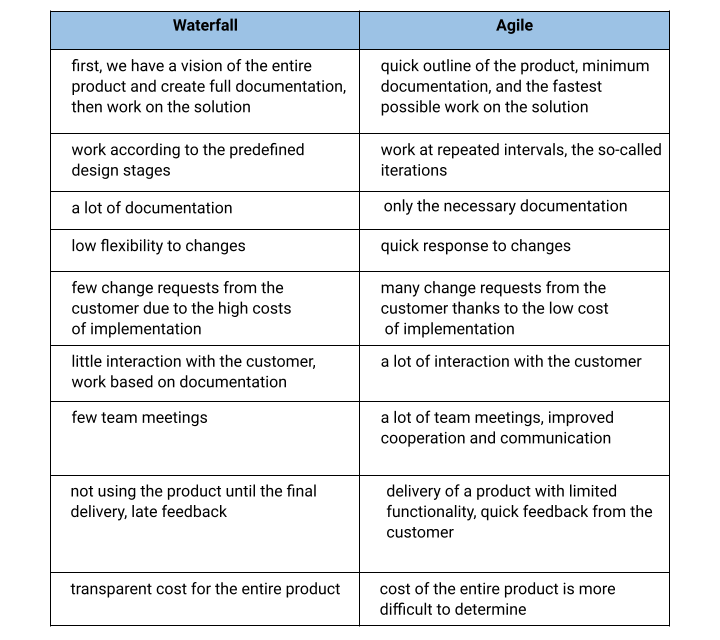
The term “Agile tester” entered our dictionaries with the spread of Agile methodologies in projects. Suddenly, everything was agile, so, naturally, the changes reached the world of testing as well. Agile tester, that is, a tester who can work in projects using Agile methodologies has become a part of the industry-specific terminology.
In my opinion, Agile testers are not only specialists who can successfully work in projects. They also have knowledge of Agile, they are flexible and open to changes. They don’t see a problem when a customer wants to rebuild a product, adapting its features to rapidly changing market needs. They have no hesitation to contact customers or their representatives to discuss an error that occurs in an application and make suggestions for improvement. Agile testers are specialists who go beyond the testing scheme, they are proactive and not afraid of confrontation. They can also say “no” if someone tries to breach their values.
Projects using Waterfall methods have a rigid framework of step-by-step processes. The Agile formulas, including Scrum, Kanban, or SAFe (recently becoming more and more popular) have a much more flexible approach to projects.
The table below shows the key differences between these two approaches:
Pic.1 – Differences between Waterfall and Agile approaches
Qualities of a good Agile tester
Every role requires a certain set of personal qualities to work effectively. In my opinion, the essential characteristics of an Agile tester include:
- Flexibility – it enables you to change the scope of the project skillfully and adapt to the current needs of the customer.
- Being a team player – we work as a team. We value effective communication, cooperation, and mutual respect. We know that we are all working towards a common goal – we want to build a product according to the customers’ expectations and specified requirements.
- Openness to changes – change is the only constant element in Agile projects. We are open to changes both in the requirements and the way we work as a team.
- Business correctness – the ability to conduct effective conversations with the customers or their representatives (because of the frequency of interactions).
That’s the theory of being an Agile tester. If you want to know what the work of an Agile tester looks like in practice, read my next article. It will appear on our blog soon.
- Senior Software Tester
-
A tester who has been associated with the Quality Assurance (QA) industry for 7 years; has worked for small companies and big corporations in such sectors as healthcare, pharma, telecom, and logistics. At work, he is opened to new challenges that he undertakes with full commitment to achieve the best results, as well as to improve processes. Privately, he likes to work out at the gym and take walks in the open air.


